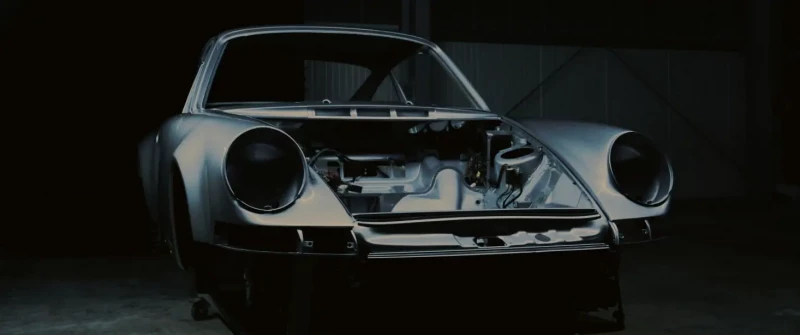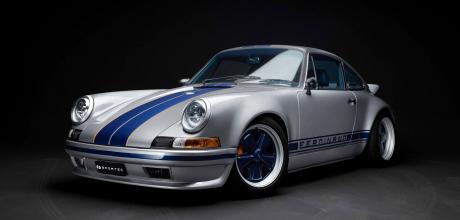Sportec’s eye-catching Project Ferdinand
A lot of good things come out of Switzerland and Sportec’s eye-catching Project Ferdinand is right there at the top. Total 911 spoke to the company’s owner and project manager about its latest creation.
Written by Wilhelm Lutjeharms
Photography by Sportec
Project Ferdinand
Total 911 goes to Switzerland and gets the inside line on a brand new Porsche restomod project with a twist
SWISS PRECISION
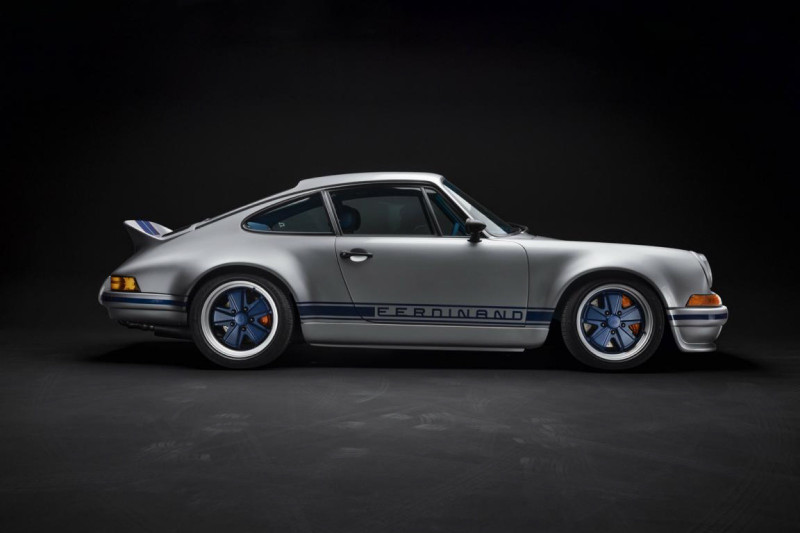
“We’re capable of manufacturing nearly everything in-house… whether a client comes to us and says they want a Cabriolet or even a Safari, we’ll be able to do it”
Switzerland is interesting for many different reasons. But for us petrolheads it’s especially inviting because of the country’s plethora of mountain roads. With the sound of the engine and exhaust reverberating off the cliffs, it’s a utopia for those who revel in that feeling of the rear wheels on the edge of traction as we power out of a tight, second-gear corner.
The Swiss are modest people and this is reflected in the cars they tend to like. Walk around in the cities or neighbourhoods and you’ll see that most cars are de-badged. There are exceptions, of course – Frank Rinderknecht, the founder of the Swiss concept car company Rinspeed, springs to mind. But generally this means that, when it comes to cars, you need to dig deep to uncover what they offer. This is also partly why the unveiling of the Sportec Project Ferdinand came as such a surprise. But first, some history about this company.
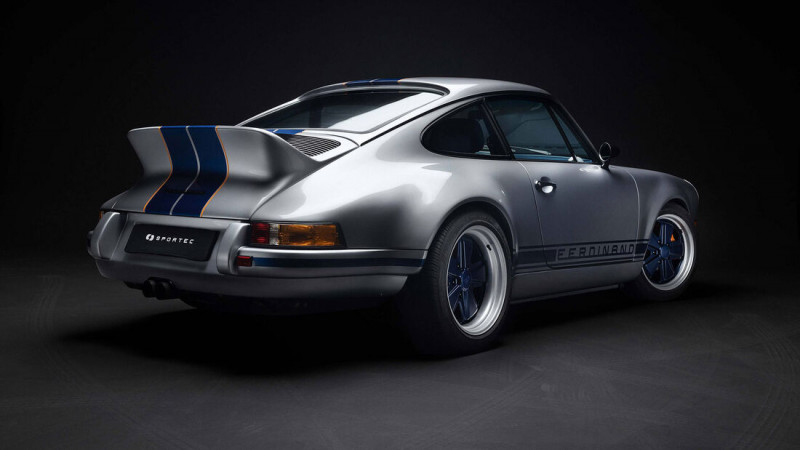
Founded in 1997, one of Sportec’s main focuses has been racing. However, apart from founding Sportec Motorsport in 2010, now called Sportec Racing, it’s been involved with classic Porsches for numerous years and even held an SUV top-speed record. The company also offers a variety of performance upgrades for modern Porsches. These include the Porsche SUV range, 997 (Turbo and GT models), 991.1 and 991.2 (also Turbo and GT models) and finally the 992 (Turbo S and Carrera S models). Two years ago the leadership of Sportec changed hands, with new CEO and owner Gregor Burkard deciding it was time for some new projects. “I took over Sportec in 2020. However, my history with the company goes back to 2011,” reveals Gregor. “Since then I’ve been a regular customer and a big fan and supporter of the company. Back then it used to tune my Audi RS3 and I subsequently got addicted to it. In the end the tuning was more expensive than the car!
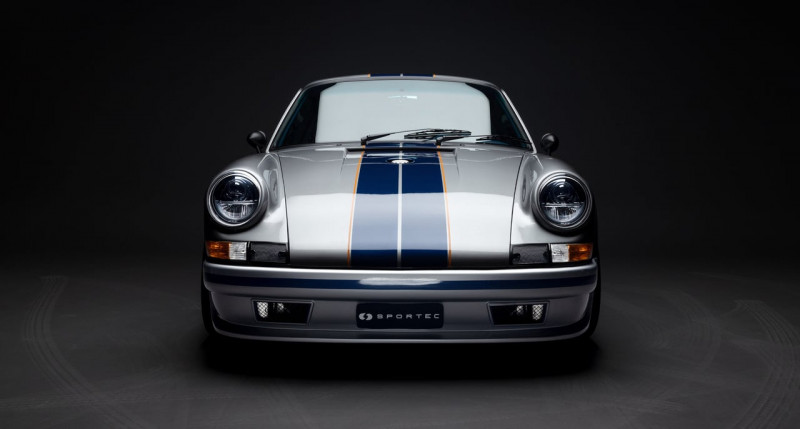
“Then in 2015 I started to race with Sportec in the Swiss Porsche Cup series, which I’m still participating in. In 2020 Sportec decided to put things in place to take the next step for the company’s future and today I’m the major stakeholder in the company.” The original founders, Ueli Hodel and Günter Mandl, as well as long-term technical lead Andreas Hodel, are all still involved.
“We obviously still have all of our senior members of staff onboard, but to make the company competitive for the future, we’ve employed many younger staff,” says Gregor. “It gets more difficult to transfer the knowledge from one generation to the next, but that’s partly been the aim with Project Ferdinand and the success of this project bears the fruit of this approach. The new bloods built the car, but with the knowledge and input of senior staff.” There’s no lack of supply of restomod 911s on the international market, but Gregor is quick to point out why Project Ferdinand is different to competitors’ cars. “When it comes to Project Ferdinand, our motorsport experience is what sets us apart from most other builders. One of our technicians, Andreas Hodel, has single-seater race car experience in Formula 2. For us the performance of the car is at the top of the agenda. It’s also important for us that what the eyes see and the hands feel are pleasant and of the highest quality.”
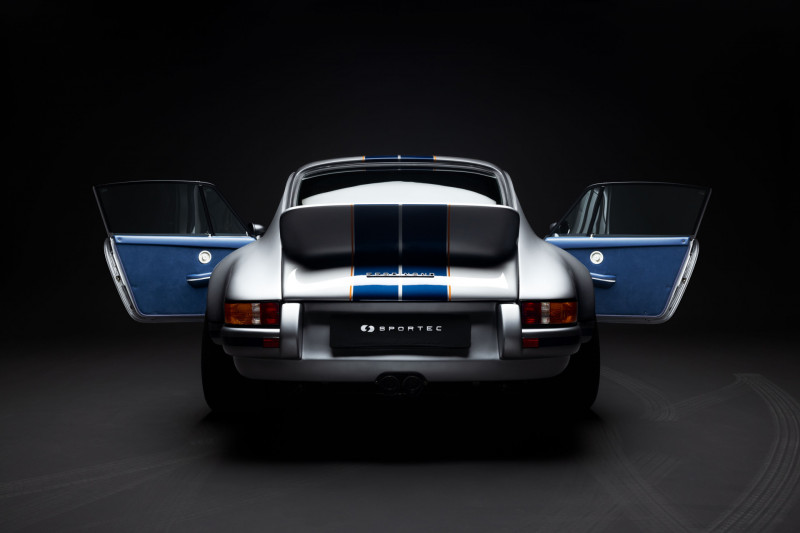
Raphael Jaggi is the project manager of Project Ferdinand and elaborates: “The idea of this project was really a wish of Gregor’s and to also develop Sportec’s classic department. After all, we’ve been building engines and working on classic 911s for more than two decades.
“The first idea was actually our SUB1000 project [an upcoming G-series restomod that will weigh less than 1,000 kg] that’s all about pure driving thrills. Pretty quickly we realised that some people still want air-conditioning, power steering and a sound system. At that stage we came up with the idea of Ferdinand, which still offered a lot of performance, but with the necessary creature comforts.
“Project Ferdinand is based on a 964. We start by stripping the car down to bare metal and then begin the rebuilding process. We fit the F-series parts to back-date it in combination with lightweight carbon Kevlar composite panels. The car is also wider on each side by 30mm.”
The window mechanisms are manual – although, if you prefer, electric windows can also be specified. There’s even a PCCM radio with DAB, Apple’s CarPlay and USB connections. The car sits on neat 17-inch Fuchs wheels: 8-inch wide in front and 9-inch at the rear. “Throughout the process there are many options available to the client. They can choose materials and colours – there’s a lot of room for individualism,” confirms Raphael.
A closer look at the cabin reveals some high-quality materials and fittings. It’s evidently still an air-cooled 911 cabin, but with very inviting touch points. The name “Ferdinand” is on the back of the car where the usual Carrera or Turbo badge would have been. The name is also neatly embossed in the main headlights, which feature Bi-LED lights. Lift the front bonnet and it almost seems pure race car. A small carpet is fitted on the floor, but the beautiful fuel tank and strut brace clearly indicate the car’s aim and potential.
“The aluminium parts you see have all been milled, with the client then being able to select their own finishes,” says Raphael. “It’s all our own products. For example, with the steering column we sat with the designer who designed it in CAD. Afterwards it was 3D printed and then eventually milled on the CNC machine. That’s what a lot of time and effort goes into.”
The basic layout of the suspension remains the same, but a lot of development has been carried out on the upgrades and various parts. “The car is fitted with Bilstein two-way adjustable dampers. Currently, we’re working with MCS from the USA. It fabricates custom suspensions and this will eventually be used on Project Ferdinand as well as for our SUB1000 project. It’s still a 964-suspension layout, but has been upgraded with new bushes, joints, stiffer roll bars and motorsport components.”
It’s when we discuss the engine where the balance, which seems to perfectly describe this project, is again evident. Raphael explains: “We take the 3.6-litre engine and enlarge it to 3.8 litres. This is done by increasing the bore. We fit higher-performance camshafts and do some work to the engine head. There’s also an improved intake system and software. For the pistons we use the OEM parts from MAHLE, for example.”
The result is 325bhp at 6,100rpm and 394Nm at 5,380rpm, with the weight of Project Ferdinand being only 1,190kg. Sportec hasn’t released acceleration figures or Project Ferdinand’s top speed yet, but we can safely assume it will be brisk.
Sportec was kind enough to supply us the dyno graph of this engine. Apart from the torque that rises consistently from 2,400 to around 5,400rpm, the power delivery is nearly linear with a constant increase to just over 6,000rpm. This should result in exactly what Project Ferdinand aims to be: a true daily driver with a sporty side. Most of us love a high-revving flat six engine, but here you have a lightweight car and an engine that doesn’t need to be revved that high to get the most out of it.
“We keep the 964 transmission. We open it up and rebuild it to make sure it’s perfect,” says Raphael. “We don’t touch the ratios for now. What we do add is a motorsport differential and we also shorten the shift throw, which enables the driver to have a more engaging experience when shifting gears. A stronger clutch is fitted to match the increase in performance of the engine. However, all are still original Porsche parts.” Even just looking at the engine, it’s clear to see that it’s beautifully built: a fresh combination of classic air-cooled 911 with a strong modern twist. We’re told the next engine in the line-up will produce around 360bhp, with Raphael confirming it’ll offer a longer stroke and new crankshafts. To finalise the handling setup of the car, Sportec has Marcel Fässler onboard. He’s a former Swiss pro racing driver with several successful stints in Le Mans, DTM and the FIA Word Endurance Championship.
However, even with all this development effort, Gregor makes it clear what the goal of the car is. “Even with all these suspension upgrades and modifications, the aim remains that you must be able to use the car every day. Project Ferdinand still needs to offer the ability to be a daily driver. Whether it’s ferrying your child around on the school run, going out for dinner with your wife or tackling your favourite mountain pass.”
Sportec can source a 964 or the client can supply their own donor car. It’s obviously important that the base car is in good shape. It doesn’t matter what the mileage is, as long as the vehicle hasn’t been in a significant accident. Building a left- or right-hand drive car won’t be a problem for the company, either. It simply rebuilds and develop the car it receives from the customer.
Gregor ends our interview with the following words: “For us as a Swiss company, quality is very important. We’ve done several projects in the past, but nobody knew about it. Maybe it’s the Swiss mentality of not bragging about your achievements. This is just the beginning for us, because already we can see where we can improve, from the engine to the interior.
“Our aim is to eventually offer clients a range of models that’s wide enough to satisfy many different potential buyers. One of our strengths is that we’re capable of manufacturing nearly everything inhouse… whether a client comes to us and says they want a Cabriolet or even a Safari, we’ll be able to do it. We’re always looking forward to improve and evolve the product. Development is also underway on our SUB1000 project. It’ll be a no-compromise car with no comfort elements at all.”
If a client supplies their own 964 donor model, Sportec charges around £370,000 for this in-depth rebuild. Considering the fact that Sportec owns a 992 GT3 Cup (and some other race cars) that it races, and manages a race department that maintains and manages nearly 20 customer racing cars from brands such as Porsche, Lamborghini, Aston Martin and KTM, we can’t wait to get behind the wheel of Project Ferdinand.

ABOVE Inside there’s a range of bespoke designs and materials on offer for clients to choose from.
BELOW Sportec is able to convert either a left- or right-hand drive 964 for Project Ferdinand.
ABOVE For the project Sportec’s engineers enlarge a 3.6-litre flat six engine to 3.8 litres. RIGHT As well as fitting lightweight carbon Kevlar panels to the body, the car is wider on each side by 30mm, compared to a standard 964.
BELOW Sportec was able to draw on over 25 years of engineering and motorsport experience as it fine-tuned its Project Ferdinand.
